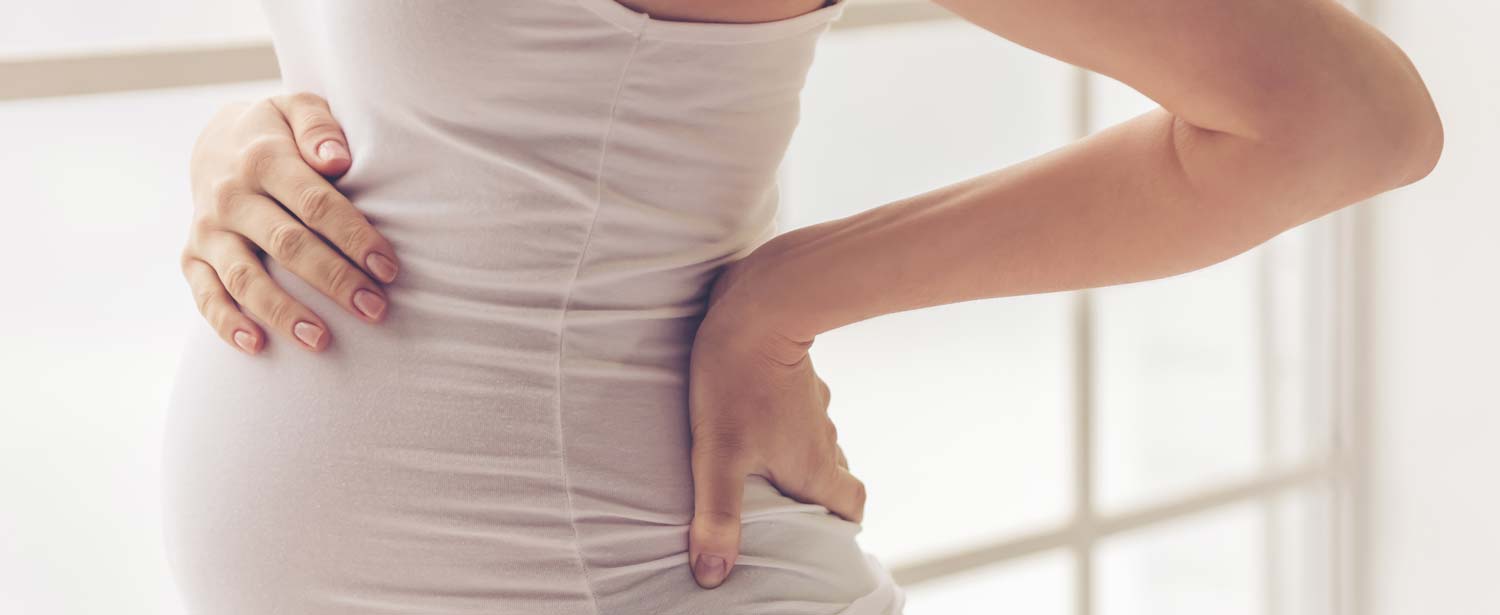
Pelvic girdle pain and pregnancy
Pelvic girdle pain (PGP) affects up to 1 in 5 women in pregnancy. It can begin in the second trimester but is more likely to become apparent towards the end of the third trimester. This common condition can range from mild discomfort to pain that alters your ability to perform daily tasks; but is easily treatable with pregnancy Osteopathy, at any stage during your pregnancy. It is recognised as a mechanical joint problem in any one, or all of the three joints in the pelvis. The joint can become slightly misaligned or swollen, causing symphysis pubis dysfunction (SPD) or sacroiliac pain.
What causes pelvic girdle pain in pregnancy?
Recent research suggests that the pelvic joint problem is brought on by the increased load your pelvis is under in pregnancy, with the increasing weight of your growing uterus. The additional weight you carry at the front of your body also begins to alter your posture as your pregnancy progresses. Your pelvis may start to tilt forwards and your lower back compress, as the action of gravity comes into force.
Another contributing factor for PGP could be the effect of hormones (mainly relaxin and progesterone) during pregnancy. The additional hormones cause ligaments to become more flexible – an important process that allows the pelvis to widen during labour. However, it does mean that your joints become more mobile during pregnancy. This can cause discomfort in the ligaments which hold the bones of your pelvis together (as well as in other joints in your body) and is one of the theories of how PGP may develop.
Often the affected joint becomes stiff and stops working normally and this causes irritation in other joints which have to compensate. As a result, muscles may become tight and painful. Normally PGP responds well to treatment from your osteopath with structural or cranial osteopathy. Your treatment will focus on rebalancing your pelvis which will lessen the pain.
How can I reduce PGP in pregnancy?
- Practice yoga regularly, altering poses as necessary and always listen to your body. Any pose that works the thighs, glutes, and pelvic floor are beneficial, as they help to support the pelvis which will reduce the impact of PGP.
- Think mermaid – keep your feet at hip width or closer, for any exercise
- Place a pillow between your thighs and ankles when lying on your side
- Keep your legs together when getting in and out of the car and whilst turning over in bed
- Sit on a firm chair with a rolled towel or cushion to support your lower back
- Avoid any position that loads the pelvis or puts it under unnecessary strain
- Walk up and down stairs one step at a time
- Avoid sitting cross legged
- Don’t lift heavy weights
- Try to avoid sitting or standing for long periods
- Keep walks shorter and walk at a slow pace
- Avoid pushing heavy shopping trollies or vacuuming for too long
- Pick up younger children by holding them close to your body and avoid carrying them on one hip
Most women report reduced PGP immediately following the birth of their baby, as the load is lifted from their pelvis. However it’s important to follow the guidelines above during your postpartum period until your ligaments recover, which can take up to 5 months post labour or until breast feeding stops.
The sooner PGP is treated pre or postnatally, the better. Don’t suffer, contact your osteopath to book your appointment.
